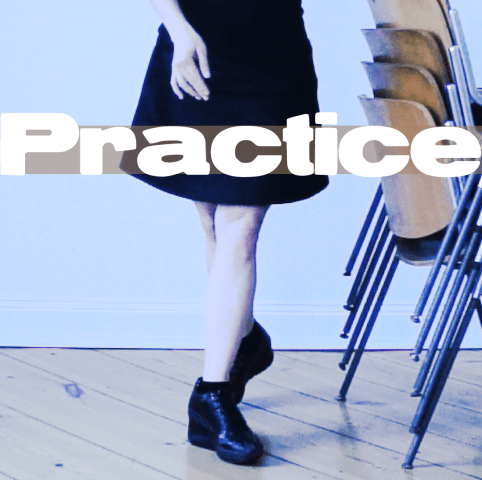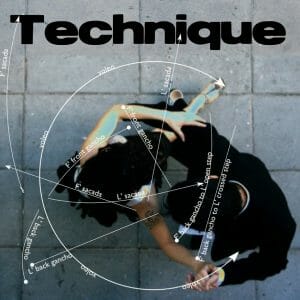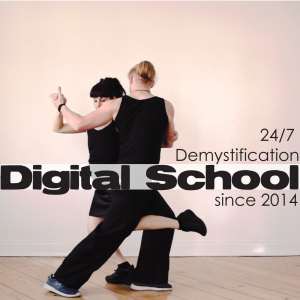You’ve been dancing a while now, and you’ve gotten past a lot of the difficult bits. You feel comfortable at milongas, confident asking people to dance, and you have dance partners with whom you feel comfortable and relaxed.
You’ve mastered a good number of sequences and you can flow from one to the next.
Your musicality is getting better and you’re able to enjoy the music more and more while dancing.
Now you realize that your dance is not improving as much. Perhaps a plateau. Of course, this is a normal stage in any endeavor. And it’s ok to allow yourself to just enjoy being comfortable, since it was soooo much work to get to this point.
But sometimes you feel a bit bored. And you don’t really want to be just another intermediate dancer. You want to be one of the ones the women look at in that way.
Going to classes doesn’t seem to help. Sometimes you can do the sequence, it depends who you’re dancing with. Sometimes you can’t get there. Either way, it’s hard to remember, and hard to take useful notes, and even the girls who were in the class don’t remember the move so on the occasions when you do remember it, you can’t do it at the milonga.
So how do you improve?
Expanding your vocabulary without memorizing
Gustavo Naveira and the Cochabamba Investigation Group of the mid-1990s revolutionized the method of conceptualizing tango dance, easing the process of improvisation. Up to that point, tango had always been taught and innovated with sequences of steps. Innovative dancers produced a new sequence once every few months.
With the assistance of participating dancers, Naveira identified and named the elemental moves themselves. By thinking in terms of moves, rather than sequences, dancers are able to improvise one step at a time, rather than having to remember received sequences.
So how do you do it?
- Start with the Tango Lexicon. Print it out. Check off each move that you can do in at least one iteration.
- Try to get through the list. Remember there are many versions of each of these moves. Your first goal is to get just one version of each into your vocabulary. There are lots of internet resources, including our MasterCourse and KnowledgeBase. Or you can just ask your teacher. Or go to a practica and ask another dancer. Make sure that you understand what is unique about this move and learn good technique. Add one move per week to your personal lexicon of moves that you use every tanda, until your personal lexicon matches the list of 25.
- Now start from the top of the list again, and figure out, all by yourself without using the internet or your teacher, how to do the move you know on the other side. You can interpret “other side” in many ways. You could do it on the other side of the embrace, or with the other foot, or in cross system instead of parallel, or you can lead the follower do it to you. It doesn’t really matter how you interpret “other side”. What matters is that you figure it out for yourself. Make sure that you add one new iteration per week and that you integrate the new move into your dancing by using it in every tanda of social dancing.
- Ok, now it’s time to become an organic tango scholar. You’ll need a practice partner. They don’t need to be a great dancer. They don’t need to be female or primarily a follower. They need to be someone patient and focused, because you are not going to entertain them during practice, you are going to be thinking and puzzling things out. Set up a weekly meeting. (It could be a different person each week.) Start again at the top of the list. This time, you are going to try to find lots of iterations of each item in the lexicon. After your practice session you might chat with a teacher or an advanced dancer at a practica. Show them what you found and ask “what am I missing?” Make plans to meet your practice partner at a milonga, so you know there will one person who “gets” what you are working on. Try to do use at least one of your new iterations in every tanda while you’re social dancing.
How to get more out of group classes
Most teachers instruct using sequences. The reason for this is so that you will gain experience linking moves together and exposure to a variety of ways of thinking about how to flow from one to the next. Unfortunately students who learn a sequence which has an interesting movement at step 4 don’t know how to get to that movement without the sequence, and if they can’t remember the first steps correctly, can’t find the interesting one they liked.
To get the maximum benefit from such group classes you need to be familiar with the constituent elements, how they are iterated, and necessary technique for each. Then you can experience the sequences in class as a glimpse into the unique creativity of your teacher. You may end up using parts of his sequences rather than the whole thing. For example, when the teacher shows a 5-step sequence, you may be especially charmed by the transition from step 3 to 4. When you understand 3 as a basic tango element, you’ll be able to go directly there.
How to bring your partners up to speed
One of the problems I hear from all my students when they learn to mark something new is “but no one follows it.” In every community, there’s a cyclic problem which is that the marks are stuck in sequences and so the revels are routinely dancing those sequences. When a mark tries something new, most revels just complete a familiar sequence and miss it entirely.
That doesn’t mean you marked it wrong!
You need to be able to talk to your partners about new stuff, and this means you need to be at a practica with them. How do you make that happen? At a milonga before the practica, talk to a revel you like and say “hey, I’m working on some new stuff in my dance and I’d like to try it with you. Would you be willing to meet me at Practica ______ and try this stuff for 30 minutes? It’s even good to set a particular time that you’ll start dancing together. As you are practicing with her, be sure to explain the movement to her. If you are studying in our Digital School, you’ll also be learning the technique she needs, so you can help her with common problems.
When things don’t work
Most teachers don’t provide much information about how to do the movements. They’re so smooth. How do they do it? And how do you know if the clunkiness is your mark or the revel’s level or lack of familiarity?
Why do you always get a _____ when you mark a _____ ? Why do girls fall on you every time you mark a _____ ?
You know where the problem happens. You need diagnostic and technical information.
Write it down or make a video and send it to us. We can diagnose most problems without even meeting you in person. Try it!
You’ll also find precise technical advice for every move in the KnowledgeBase.
What’s so special about those guys?
It’s hard to figure out why the girls swoon over the guys they do. But you definitely want to be one of them.
What’s the secret?
They never break the connection, not for an instant. They meet the revel exactly halfway across the embrace all the time. She feels tenderly supported, not by his arms gripping and drawing her to him, but by his lovely warm chest pushed into hers. He gives her power for each step that makes her feel almost like he’s carrying her into the next move. The mark is so clear that her step feels inevitable, and yet the mark comes from his whole body, and, seemingly, through hers, not at her. And it feels his attention never wavers from her. Not for one instant in the tanda.
How does he do this?
Your upper body is only the beginning of your strength, but it’s not the strength you’re going to use when you dance. It’s all about maintaining the Arch of Connection consistently throughout the dance. The Arch is easy to understand and implement. If you learn it you’ll save a lot of time and money with teachers who give you endless corrections and can’t quite explain what it is they do to dance so well. It’s one of our 5 Biomechanical Tools, a distilled understanding of Argentine Tango technique used consistently in all the materials of our digital school.
It helps you feel strrong and confident, so you can embrace her more tenderly than ever before.













